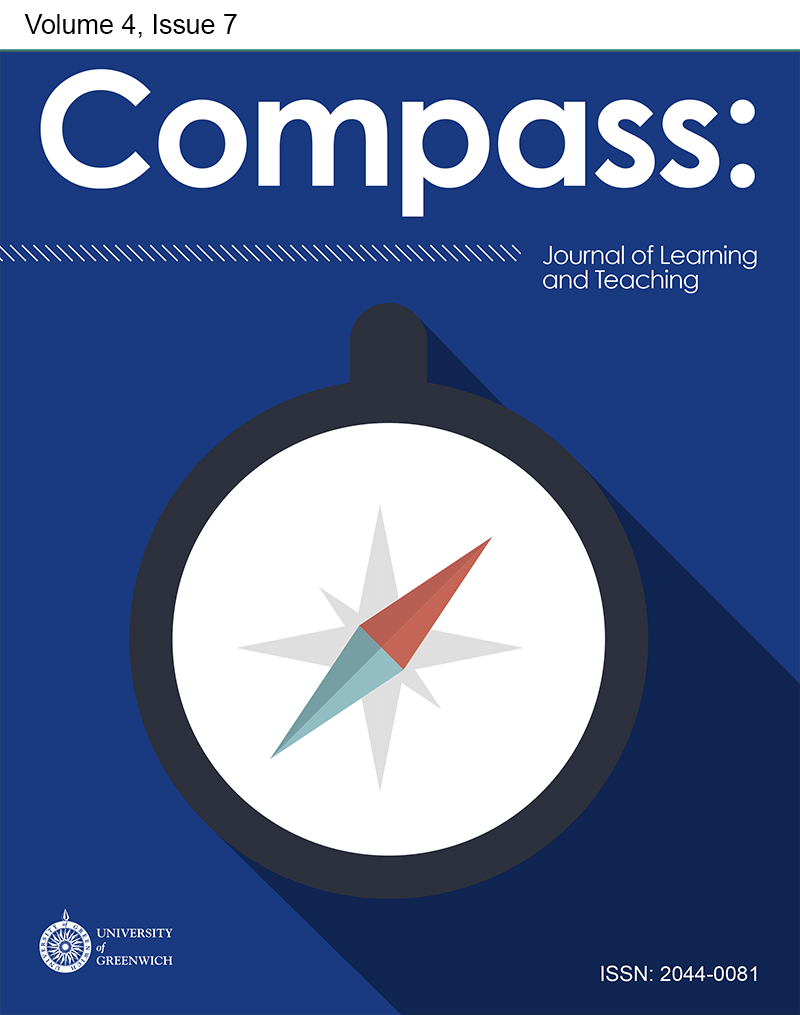Student collaboration in developing an on-line self assessment tool, to enhance development for student and newly qualified professionals
DOI:
https://doi.org/10.21100/compass.v4i7.81Abstract
A “Competence in Practice” (CiPA) self assessment tool was developed initially as a research instrument as part of the Centre for Excellence in Teaching and Learning; Assessment and Learning in Practice Settings. The tool asks a series of questions against which participants self-rate their preparedness for practice. A working group then created software from this that is used as a formative exercise to rate confidence and perceived competence in practice. This freely available package (http://cipa.hud.ac.uk ) responds with feedback to individual users on their self evaluation, facilitating reflection and guided supervision. The development involved an innovative, collaborative partnership with academics and students, who undertook the work as a paid project as well as actively participating in workshops and conferences. Working collaboratively was a powerful experience for all involved. This case study presents the development of the tool, focusing on the collaborative aspects of the work. Working collaboratively with students in this manner enabled many positive outcomes and lessons for the future.
References
Baxter, P. and Norman, G. (2011). Self-assessment or self deception? A lack of association between nursing students’ self-assessment and performance. Journal of Advanced Nursing. 67 (11), 2406-2413.
Conway-Gòmez, K. and Palacios, F.A. (2011). Discussing the Geography of Sustainable Development through an International Online Collaboration with Students in Chile and the USA. Journal of Geography in Higher Education, 35(2), 265-279.
Flying Start Programme, NHS Scotland. Availble at: http://www.flyingstart.scot.nhs.uk. (Accessed 13 August 2012).
Harpin, S. and Gilmore-Bykovoskyi, A.L. (2012). Bringing students to the table: the value of student involvement in Midwest nursing research society. Western Journal of Nursing Research. 34 (3), 287-8.
Higher Education Academy (2012). What works? Student retention and success programme, Available at: http://www.heacademy.ac.uk/what-works-retention. (Accessed 7 January 2013).
Hmelo-Silver, C.E. (2004). Problem-based learning; What and How do students learn? Educational Psychology Review, 16(2), 235-266.
Holt, J.; Coates, C.; Cotterill, D., Eastburn, S.; Laxton, J.; Mistry, H.; and Young, C. (2010) Identifying common competences in health and social care: An example of multi-institutional and inter-professional working. Nurse Education Today. 30(3), 264-270.
Kramer, K. (2005). Medical student involvement in research in the pre-clinical years. Hawaii Medical Journal. 64 (7), 190-1.
Kruger, J. and Mueller, R.A. (2002). Unskilled, Unaware, or Both? The Better-Than-Average Heuristic and Statistical Regression Predict Errors in estimates of Own Performance. Journal of Personality and Social Psychology. 82 (2), 180–188.
Millard, L. and Hargreaves, J. (2013) Creatively employing funding to support innovation Innovations in Education and Teaching International (in press).
Osman, G; Duffy, T.M.; Chang, J.Y.; and Lee, J. (2011). Learning through collaboration: student perspectives. Asia Pacific Education Review, 12(4), 547–558.
Student Learning and Teaching network (no date). Available at: http://www.northumbria.ac.uk/sd/academic/sches/programmes/lt/afl/cetl_afl/engagement/network/studentnetwork (Accessed 13 August 2012).
Vessey, J.R. and de Marco, R.F. (2008). The undergraduate research fellows program: a unique model to promote engagement in research. Journal of professional nursing. 24(6), 358-63.
Downloads
Published
How to Cite
Issue
Section
License
Compass: Journal of Learning & Teaching provides immediate open access to its content on the principle that making research freely available to the public supports a more equitable global exchange of knowledge.
Works are released under the default licence of Creative Commons Attribution 4.0 International (CC BY), which provides unrestricted use, distribution, and reproduction in any medium, provided the original work is properly cited. If authors require a divergent licence, please contact the Scholarly Communications Manager at scholarlycommunications@greenwich.ac.uk.
Authors of articles published in Compass: Journal of Learning & Teaching remain the copyright holders to their published work and grant third parties the right to use, reproduce, and share the article according to terms of the Creative Commons license agreement applied to the work by Compass: Journal of Learning & Teaching.
Self-archiving policy: authors are permitted, and encouraged, to deposit any version of their article - submitted, accepted, and published versions - in subject and institutional repositories at any time.
If you have any queries about the choice of license, or which to discuss other options, please contact the Scholarly Communications Manager at scholarlycommunications@greenwich.ac.uk.



